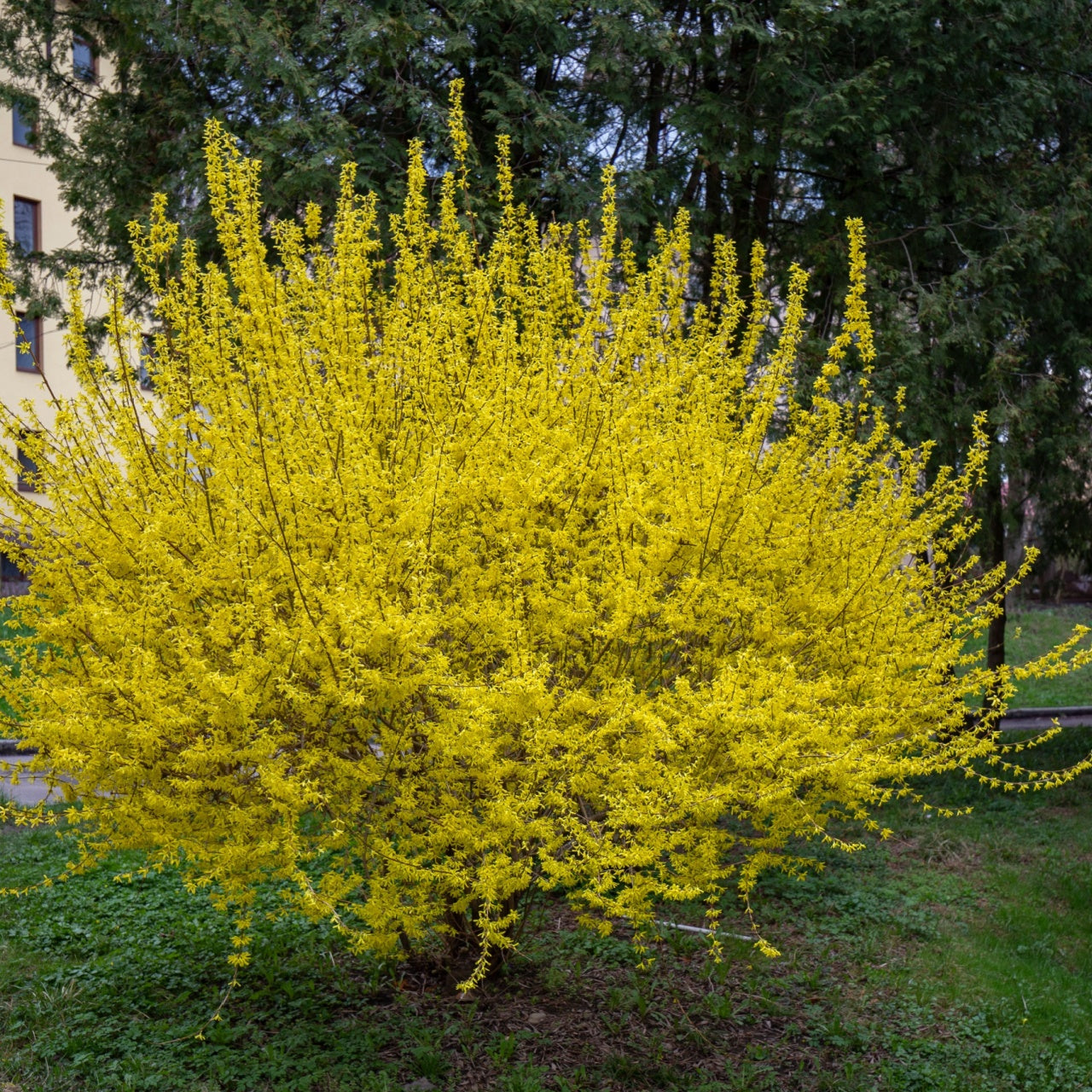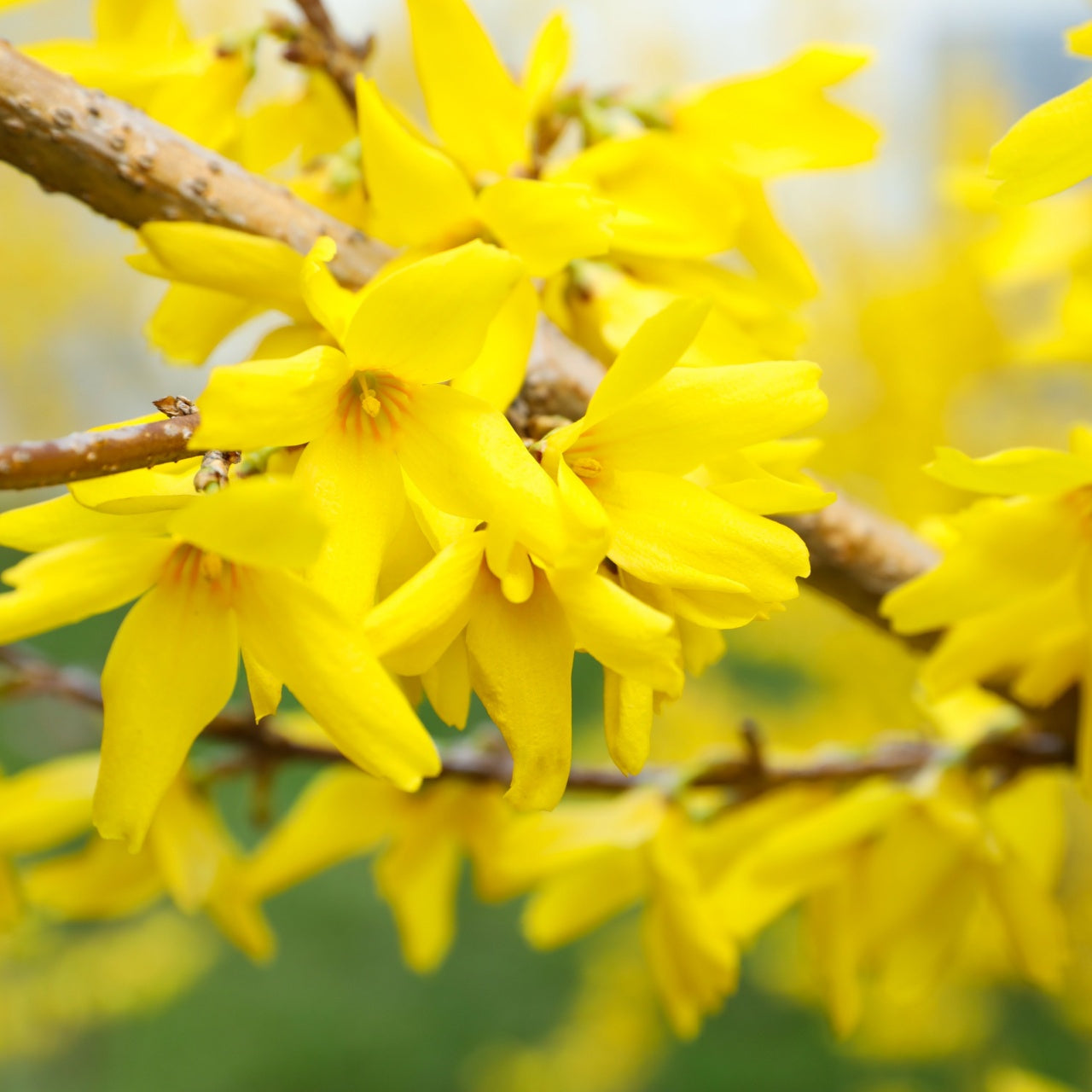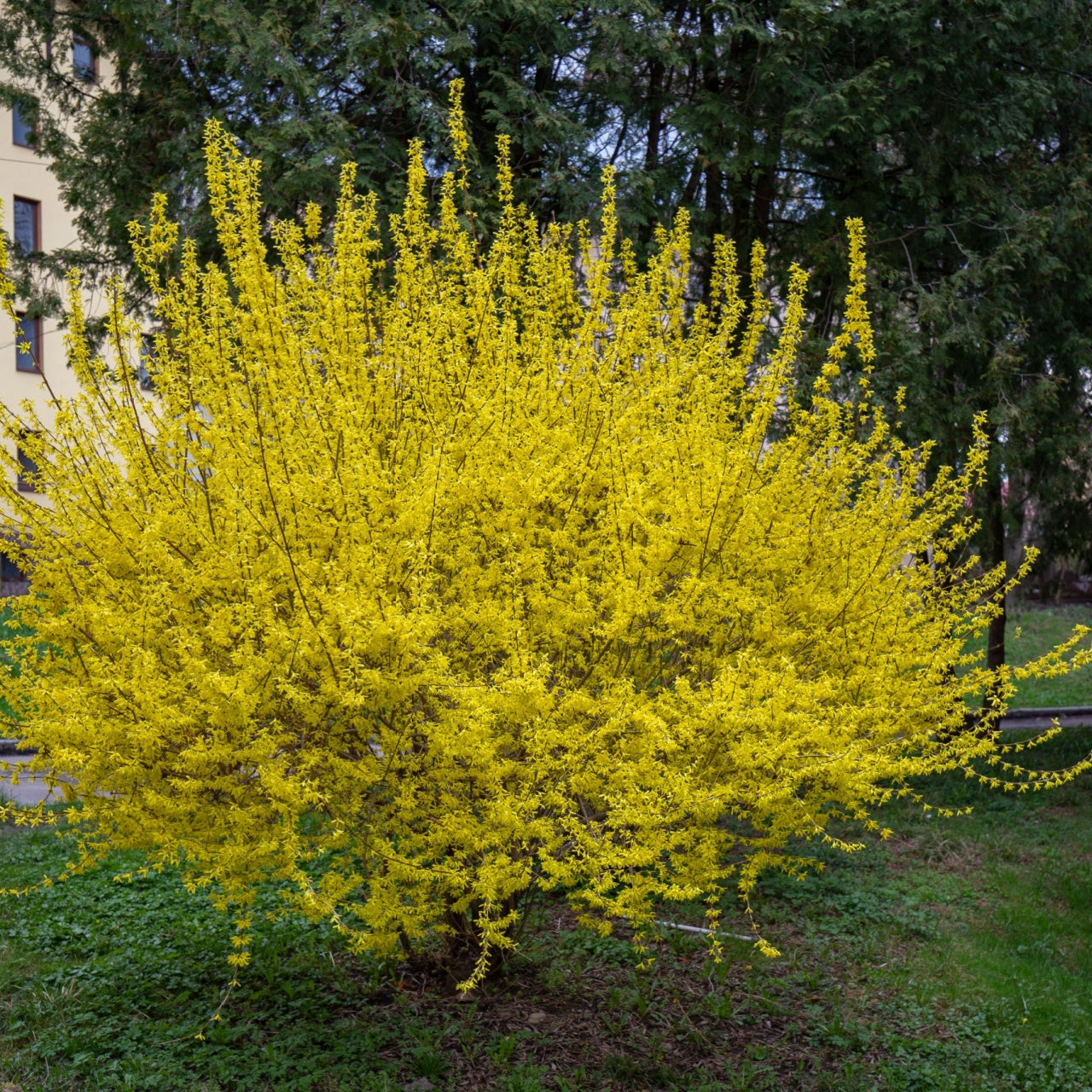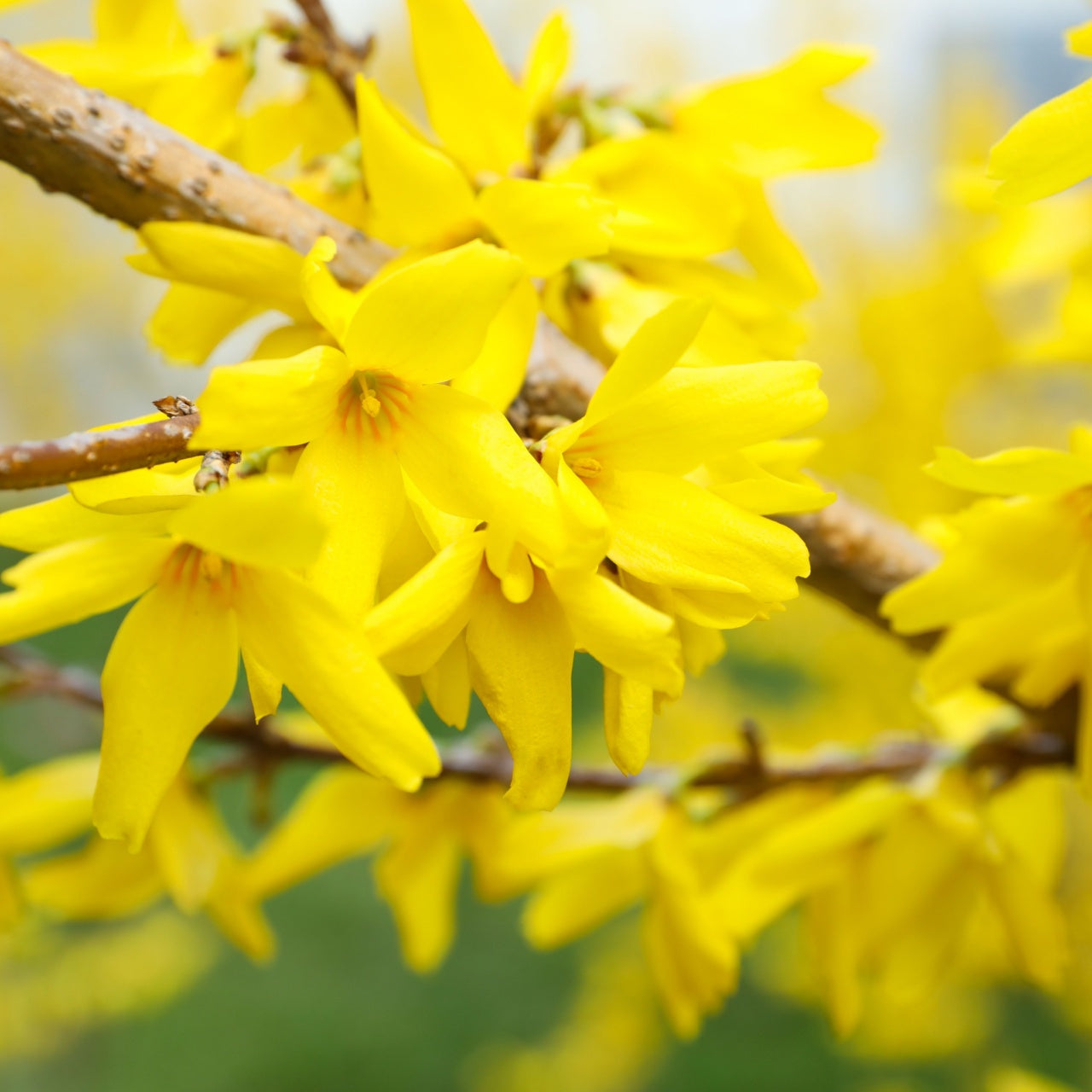Forsythia Shrubs
Forsythia Shrubs
This plant ships:
Ships Week of May 12thCouldn't load pickup availability
Exposure
Full SunHeight at Maturity
Under 10 FeetUsage
FloweringShipped As
Bare-rootShips
Ships Week of May 12thPlanting Zones
5-9Forsythia Shrubs
Forsythia Shrubs feature long, slender branches with small, bright green leaves. The branches stand tall or arch, giving the Plant its graceful, weeping appearance. When in bloom, the plants produce many small yellow flowers, each with four petals.
The flowers, which occur in early spring, usually before most other plants bloom, appear before the leaves so they stand out. It varies in size but typically grows between eight and ten feet tall and has a spread of between ten and twelve feet.
Forsythia Shrubs Can Grow 2 Feet Per Year
During maturing, this Plant can gain two feet in height during the growing season. It is tolerant of various conditions, including multiple soil conditions and alkalinity. However, these plants grow best in soil that drains well and is rich in organic material. They are also drought-resistant, although, in ideal conditions, two inches of water per week is suggested. Also, it prefers the full sun. Four to six hours of full sunlight daily will help the Plant produce more blooms. These bushes, native to Asia and Europe, grow very well in the U.S. hardiness zone 5 through 8.
This Plant is a significant bush that produces bright, cheerful blooms.
This bush is excellent for a hedge or any blank spot that needs a pop of color. To allow for growing room, the bushes should be planted four to six feet apart. After blooming, you can prune the bushes to reduce their leggy appearance and maintain their natural round shape.
The Shrub Has Sunny Blooms In Spring So Bright It Can Sting Your Eyes
Many know it as the official herald of spring. Its distinctive bright yellow flowers often bring the first spark of life to dull landscapes, blooming even before its foliage! Suitable for zones four through nine, this hardy deciduous bush prefers to grow in well-drained loam but will tolerate nearly any type of soil without requiring augmentation.
This shrub can be planted in partial shade, but ensuring they receive at least four hours of direct sunlight daily will ensure maximum flowering. The bushes proliferate, gaining up to twenty-four inches in height annually until they reach maturity in five to six years at ten to twelve feet. Mature bushes will be almost as complete as tall, spreading in graceful arches up to twelve feet, making them an excellent choice for hedges or a natural alternative to human-made fencing.
Golden Bell type is an Excellent Choice for a Natural Alternative to Human-Made Fencing.
The Leaves Come Quickly They Are Emerald Green
Flowers are quickly replaced with dark green, three to five-inch alternating oblong leaves, providing superior privacy through fall. Landscapers often turn to Golden Bell as a low-maintenance focal point to disguise problem areas near foundations or around unattractive but permanent yard fixtures such as well pumps or sprinklers.
While this bush may look delicate, it is known for being highly tolerant to wind, high heat, deep cold, snow, and even the craziness of big city life. Its resistance to drought and deer makes it a favorite in country settings for planting as a border near fields or meadows. The Golden Bell type is an exceptionally versatile bush that will reward its keepers with years of beauty and service.
They bloom bright yellow flowers during the early spring.
This bush is any member of a group of bushes in the same plant family as the olive tree; they bloom with bright yellow flowers during the early spring and are often used as botanical ornaments to decorate gardens. They usually grow between 10 and 15 feet tall and have a spread of 9 to 12 feet wide; because they are a fast-growing plant, they make an excellent choice for someone looking to grow their bushes from their seed or seedling states.
These are a hardy group of bushes that do very well under various environments, including multiple levels of sunlight exposure, nearly any soil type, and most climate conditions. However, they grow fastest and most often bloom under high levels of sun exposure, in well-drained soil, and in zones 4 through 9—depending on the breed. They are also highly drought tolerant, so these plants are an excellent choice for living in areas with low rain levels.
You Must Plant These Shrubs 5 Feet Apart
Because the Forsythia shrubs grow to great spreads quickly, owners must plant the bushes at least five feet apart when hedging. Also, remember that their fast growth rate could cause the outer leaves to exhibit a frizzy appearance, requiring occasional pruning to maintain a well-kept appearance.
This bush is a deciduous plant whose leaves morph from lush green in the spring and summer to bright yellow or deep violet in the fall and early winter. Its golden bell-shaped flowers bloom throughout the spring and early summer and are often garnished for salads and other meals.
There are seven known species of this shrubs, with the significant difference being the growth pattern, which ranges from a treelike branching to an upward-pointing, vase-like style. Their scientific/Latin name is intermedia.
With its rapid growth rate, versatile decorative uses, edibility, and numerous medical applications, the bush will continue to be favored by many for a long time.
Share



I am hopeful for a successful full color this coming spring time. Keeping my fingers crossed since this would be my first time to see this bloom.
This is a wonderful addition to the front of my house. Looks great



